Mimir
User Research / UX Design
Group Project / 2019 / 4 Weeks
Mimir supports designers to push the boundaries of their desk research process. Different from a search engine, Mimir proposes a new frame of presenting online resources where users explore, learn and get inspired by sourced information and others’ research experiences.
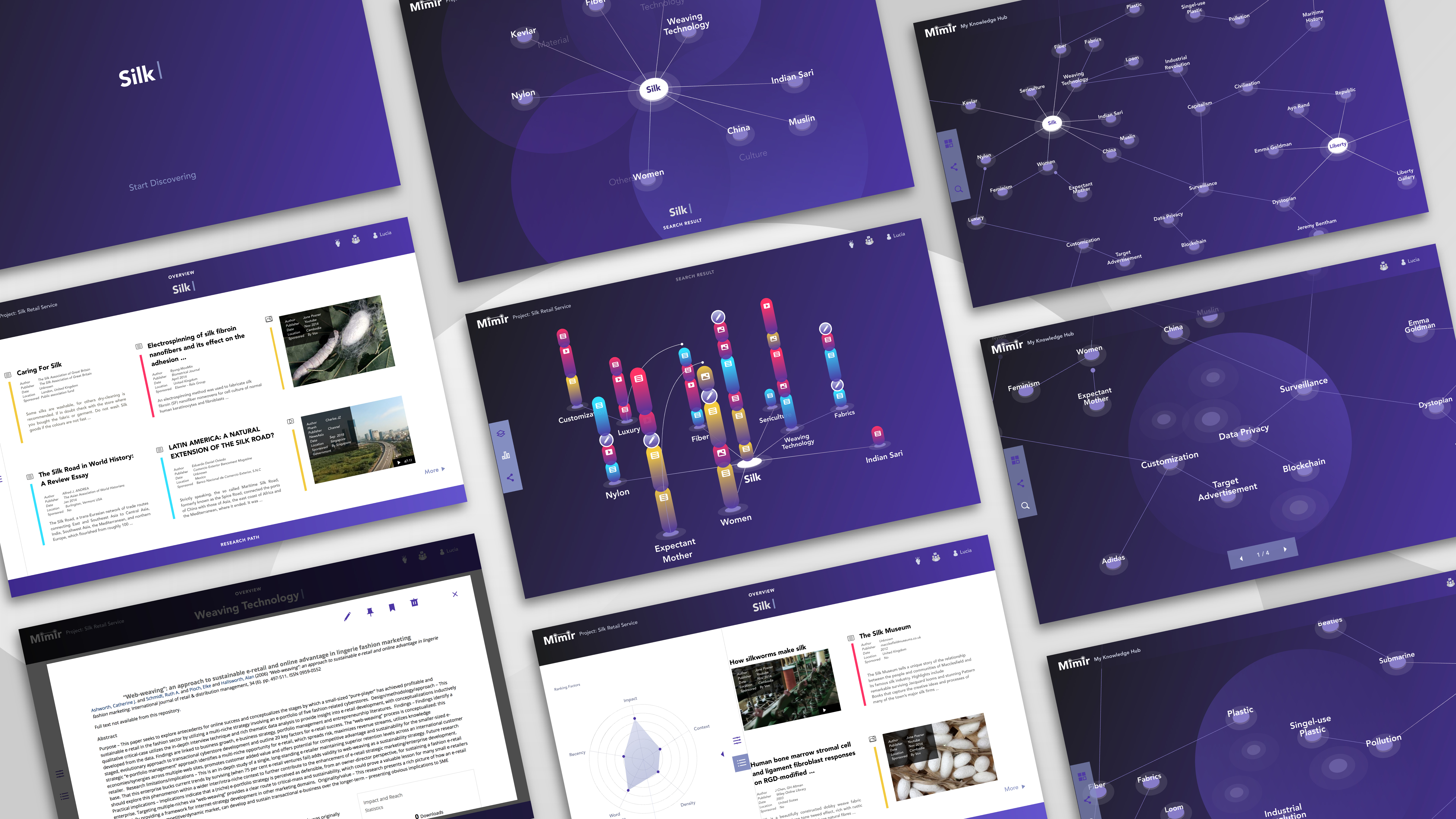
It is probably a life-long question to ask ourselves that “what makes a designer”. But we can at some point agree that designers are those who make linkages in a innovative way, who speculate and define new challenges. Conducting research and gathering information is part of designers’ everyday life, in order to be responsible and confident of what they are going to create. We’re exposed to loads of information at the moment we open our browser and usually feel lost as most of today’s internet users. What’s more, because of the nature of design we face the challenge of undefined scope, multidiscipline, etc. which makes it hard to conduct efficient research every time.
What is missing for designers in their research and information-gathering process? Is Google a good enough friend of designers? What is the future of human-machine-cooperation in term of this particular scenario?
Discovering
In order to gain understanding of our users’ need, we interviewed 10 design students in Royal College of Art with different background and design experience of their process and problem in conducting research.
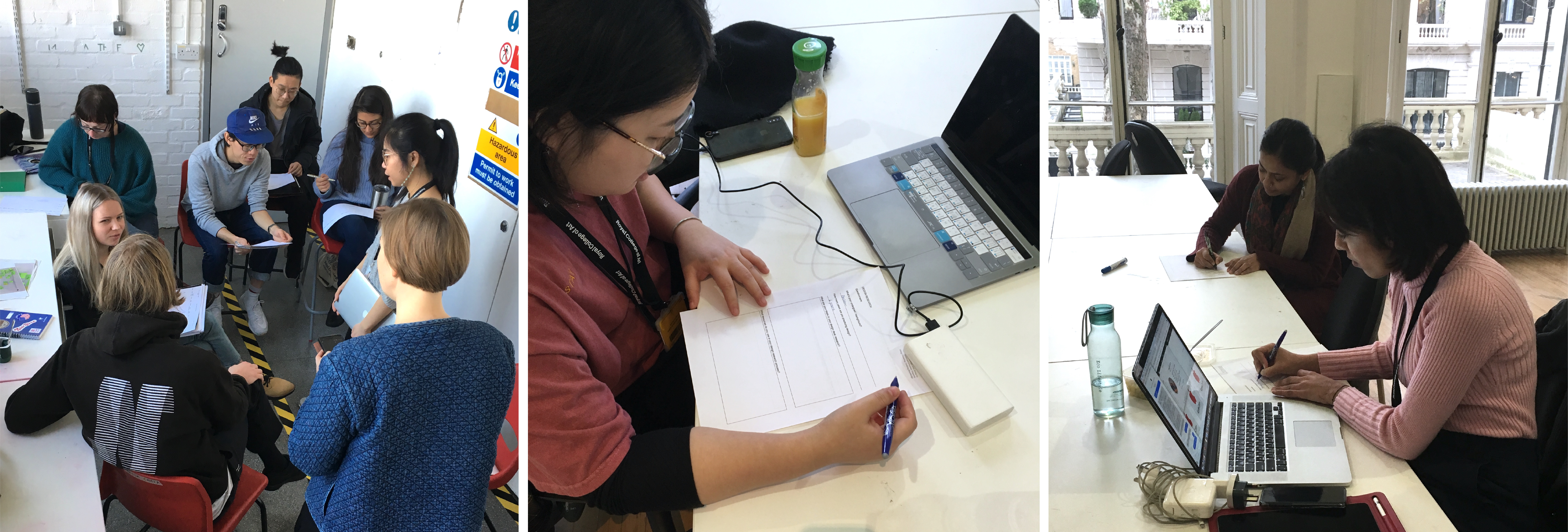
The general process is summarised as below:
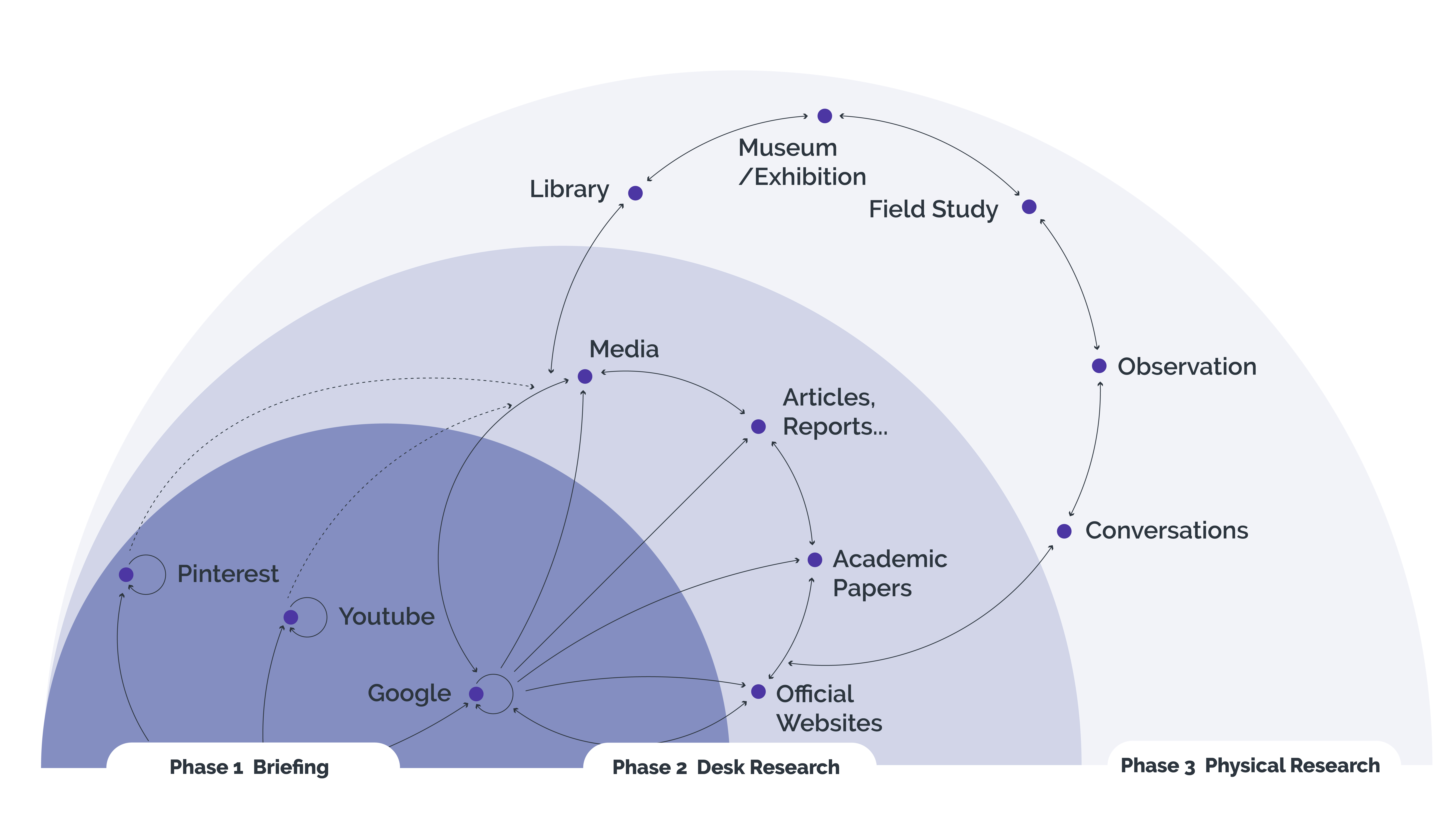
When focused on desk research, our interviewees reported several concerns and problems:
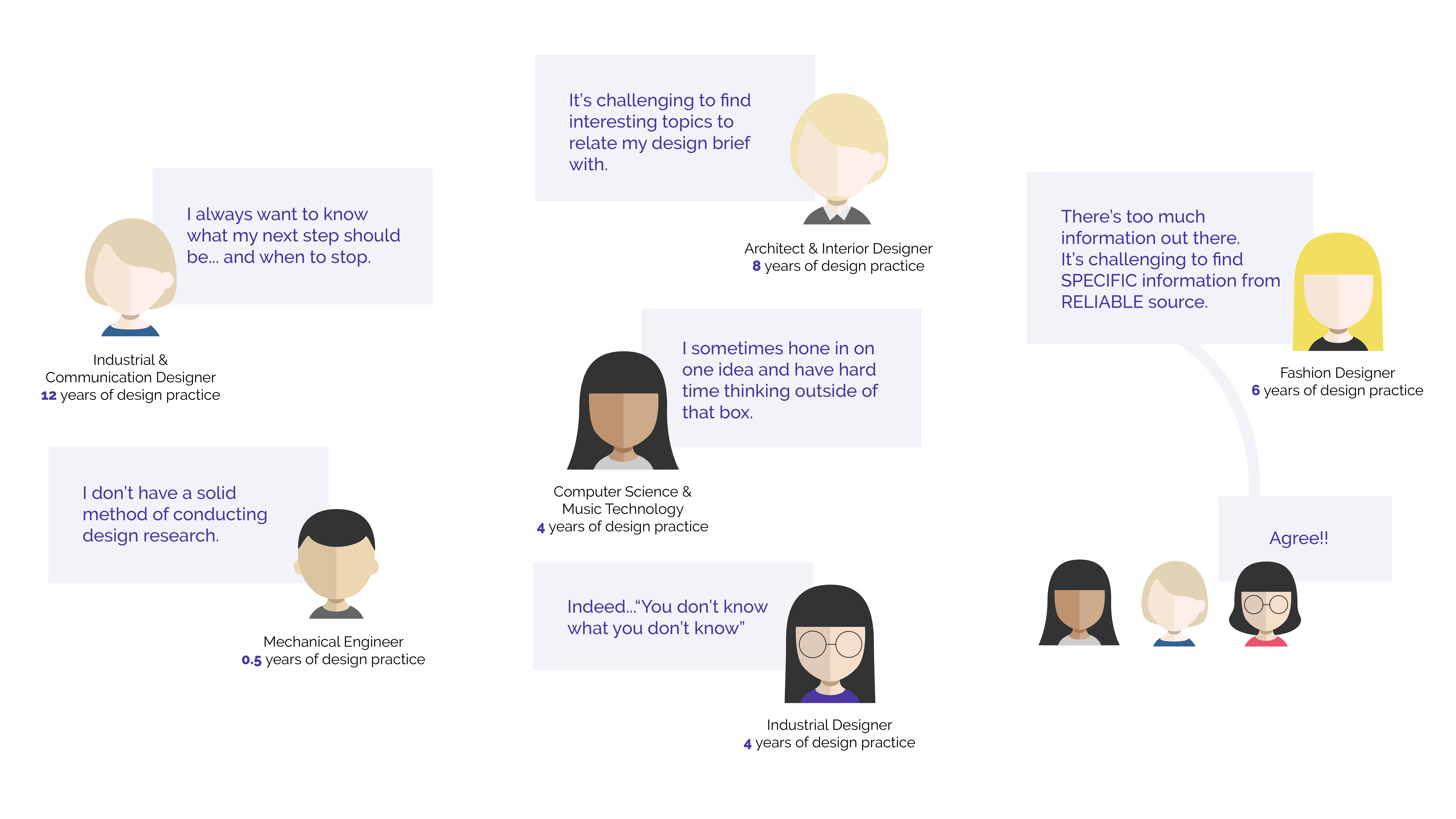
Ideation & Quick Prototyping
Key features
- Transparency — Provide users information as sourced as possible and allow users to decide how the result is ranked.
- Multi-perspective — Inform users of presence of information from different perspectives and allow them to select what they want in a clear and holistic way.
- Connection — Inspire users by providing connected topic, helping users carry through open and continuous research.
- Record and share — Help users understand and keep path of “how do I get here”. The “path” allows reflection and tracing back, as well as inspiring others in researching into the similar topic.
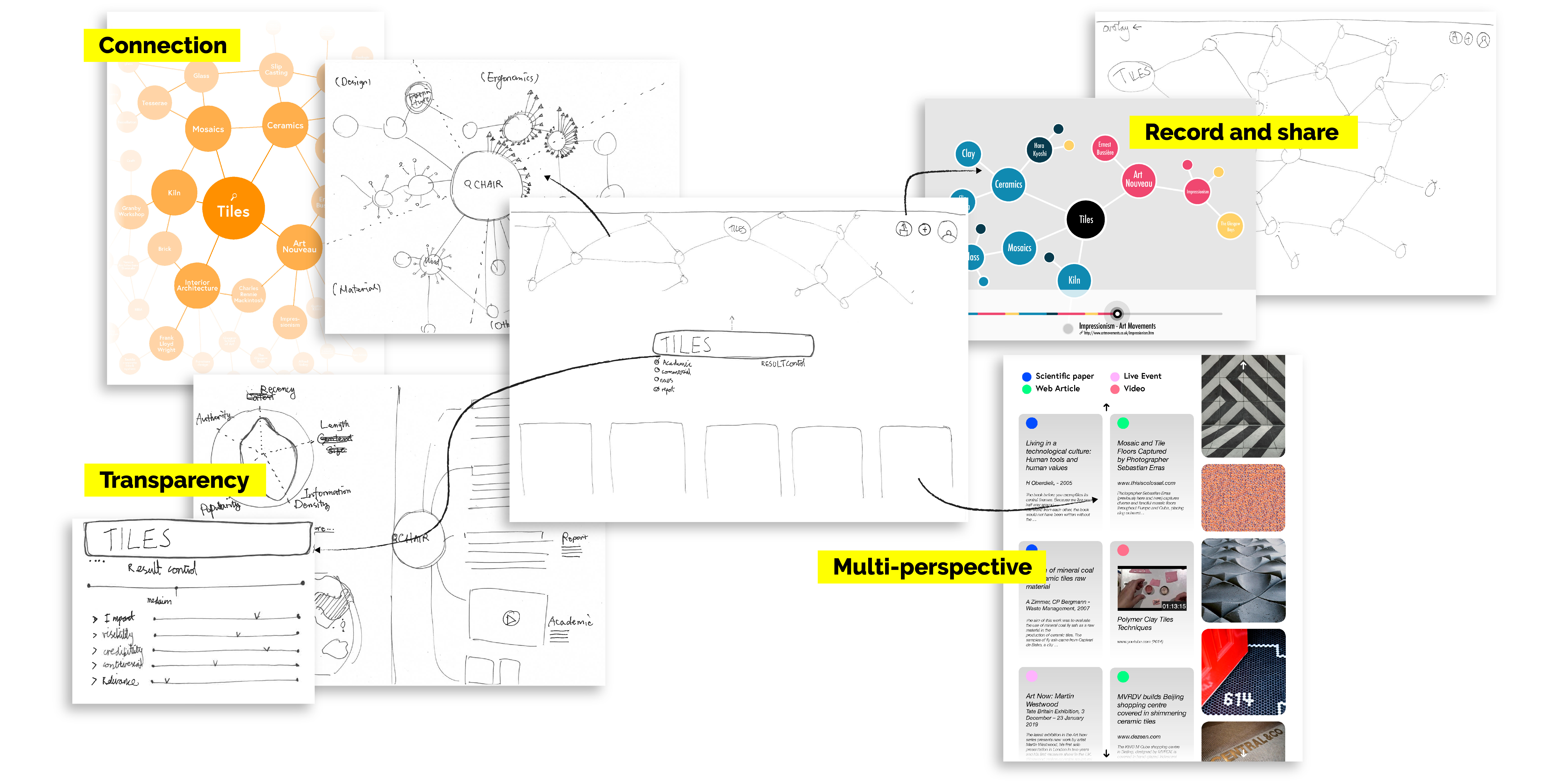
Deliverables
UI Design
This was a group work by Cecilia Santucho, Hanne Viehmann, Lisu Yu, Oliver Hawkes and me during a collaboration project between Royal College of Art and CERN(the European Organization for Nuclear Research) in which I did the UX/UI design.
